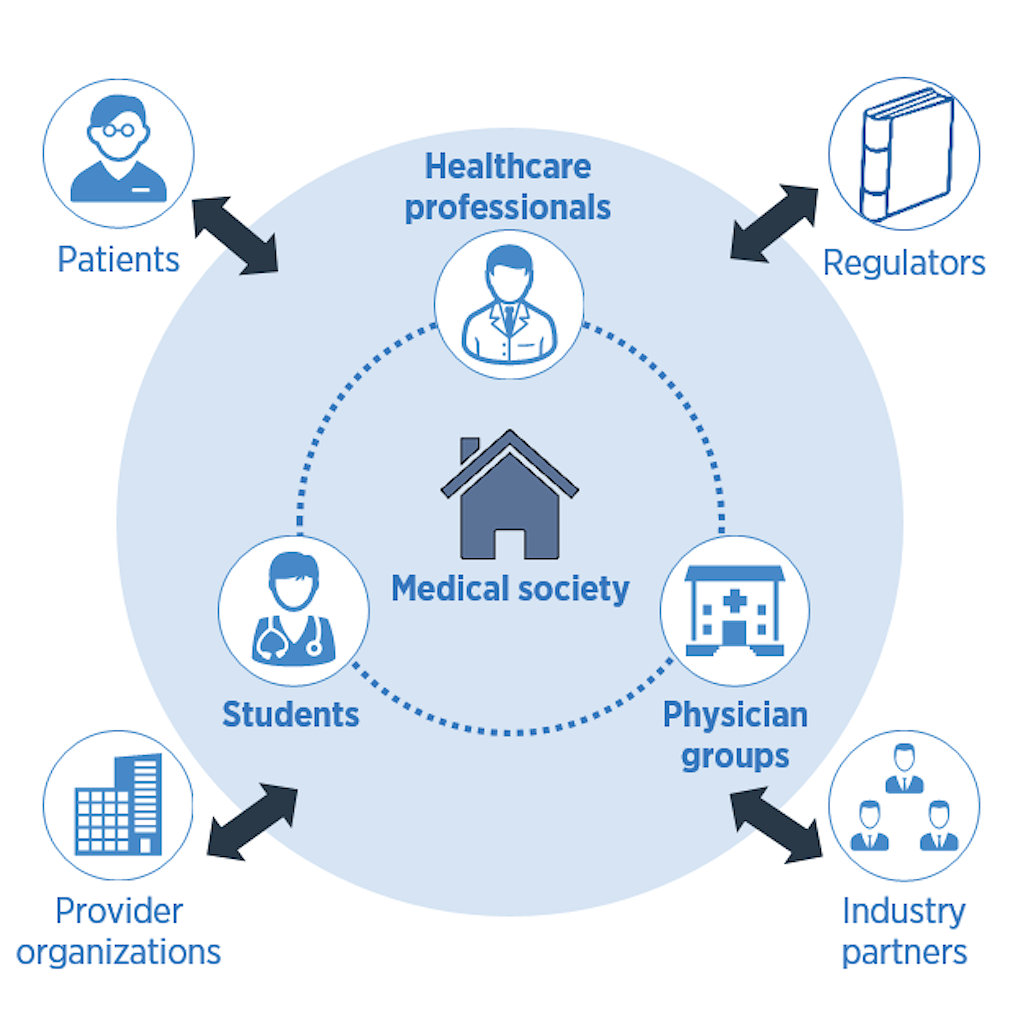
Reinventing medical societies: managing costs and delivering revenue in order to drive relevance and sustainability
Tags
Medical societies have historically relied on a small set of services for revenue, traditionally providing services in the areas of quality, education, policy and community. With the healthcare industry undergoing significant transformation driven by market consolidation, technology, new care models and regulations, medical societies need to reinvent their business models to remain relevant and sustainable.

In response to a changing healthcare environment, medical societies must adopt innovative thinking to stay relevant and sustainable. Societies need to rethink their business models by:
- Defining a product strategy to pursue new revenue sources through different products and services
- Executing a go to market plan with a clear understanding of the market and thoughtful product and pricing structures
- Transforming the operating model and assessing back-office functions to support the development, sales and delivery of new products.
Failing to take action puts societies at risk of falling behind the competition.
Define a product strategy
Societies need to define new strategic objectives to meet the shifting needs of the industry and create stronger value for members. Societies must define a product strategy that recognizes new service models for offerings that are key revenue drivers.
A clearly defined product strategy allows the society to rapidly develop and deliver new, innovative products at various value-points for different segments of customers.
For example, as societies compete for the valuable time of their members, developing innovative educational offerings that reach target members in a way that they best consume information is critical to maintaining relevance and perceived value with the membership base.
Key steps to developing a product strategy includes:
- Segment customers: Identify clear customer needs and level of engagement with the organization
- Identify partners: Identify opportunities to partner with other societies or vendors to leverage expertise and manage resources
- Prioritize ideas: It is ok to “not be everything to everyone”. Prioritize efforts based on values and expected benefits
- Define a stage gate approach: Document the plan to move your strategy into action that clearly defines milestones and stage gates to review progress on execution.
Execute a go to market plan
After a product is defined, organizations struggle to take product ideas to execution due to a lack of market knowledge or clear plan of action. This is especially true for specialty societies used to playing in a niche and relatively uncompetitive space. Societies need to develop a comprehensive go to market plan to execute their product strategy that includes:
- Value proposition: Competitors are introducing innovative products which have the potential to capture market share. To combat this, societies need to rethink their traditional offerings and adapt them to stay relevant. With healthcare professionals busier than ever and budgets stretched thin, societies need to create a compelling value proposition that ensures customers are willing to engage with them.
- Pricing and structure: Societies will need to think about how to sell and price their products—e.g. sell full e-Books or sell by chapter; whether to adopt a cost-plus or value-based pricing model. This will depend on the customer need, the product value delivered, and the organization’s capability.
- Development roadmap: In a continually changing healthcare environment, societies need to be agile in their product development. By taking an iterative approach, products can be developed quickly to engage the customer early, earn revenue sooner, and create more competitive products.
Execution of the plan will require creativity, speed, and endurance. Products need to be developed quickly, sales generated early, and lessons learned throughout.
Transform the operating model
Societies also need to transform their operating models to be more efficient and adaptable to change. With healthcare providers spending less, societies will feel the impacts. To remain competitive, societies will need to assess their capability model, organizational agility, and internal processes.
Societies should understand the capabilities required to develop new products and sustain traditional revenue streams. The decision to insource, outsource, or partner will vary on each organization’s strategic goals, costs, and existing infrastructure.
Societies have historically relied on a few key products for revenue with little need for organizational agility. However, as societies add products, they will need to assess whether their support processes (e.g. finance, governance) can be scaled and adapted to changing service offerings. For example, a traditional Society with a membership driven revenue model will need to focus on developing B2B marketing and sales capability to deliver new training products targeted at physician groups. Similarly, back office functions like Finance and Accounts Receivable need to be redesigned to work in a B2B environment.
To drive efficiency and scalability, societies should review their internal back office processes. Societies that standardize their processes avoid data silos and inconsistencies that make it difficult to manage operations. Adoption of automation and technology, such as CRM systems to drive sales growth or auto-fill in membership forms, can help societies use resources efficiently and effectively.
The healthcare industry is experiencing significant change, especially in the provider community. As an essential resource and network for healthcare professionals, medical societies must continue to help members navigate a bumpy and uncertain healthcare ecosystem, continue to serve as a community, and help their members grow throughout their careers alongside their peers and mentors. As societies look to evolve their product strategy, they must ensure they understand the needs of members and develop services that maintain their relevance, deliver revenue and manage costs.
Explore more







